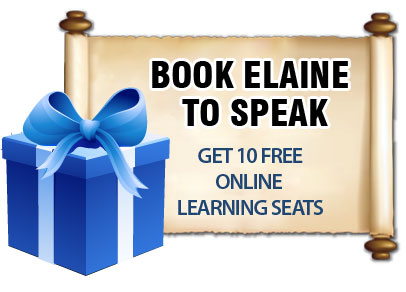 By now most organizations are using some form of social media platform. Whether managed by one person or a whole department, it is critical to know why and how you use it, and then measure results. I have written before on managing service levels by watching and responding to comments. But now that we’ve had years to observe how social media can be used and how it can behave, it is critical to know a few important areas to incorporate Social Media into your Customer Service Strategy.
By now most organizations are using some form of social media platform. Whether managed by one person or a whole department, it is critical to know why and how you use it, and then measure results. I have written before on managing service levels by watching and responding to comments. But now that we’ve had years to observe how social media can be used and how it can behave, it is critical to know a few important areas to incorporate Social Media into your Customer Service Strategy.
What is a Customer Service Strategy?
A customer service strategy is watching how your customer finds you (think brand and fit) and how they build trust in you at every single touch point before, during and after they part with their money to purchase and experience your product or service.
Social Media has not changed the game, just how the game is played.
Uses for Social Media
Social Media should be used in the following ways to:
- Drive traffic and awareness (Before) – know your keywords and the ones you can compete with for SEOs (i.e. Search Engine Optimization, which is another topic unto itself)
- Build loyalty and ensure you are a trusted source (Before, During & After: think influence)
- Convert traffic into a customer (Before, During & After)
- Communicate to customers during the use of your product or service (Before, During and After: think Google+ or SlideShare if you are managing large groups)
- Convert customers to raving fans (After: invite customers to share their positive experiences)
- Allow you to manage positive and negative feedback so you can react quickly (set up Google alerts, and Google Analytics – Advanced Segments, and follow alerts on all your accounts)
- Measure your effectiveness (e.g. Google Analytics: traffic Sources, conversions, Klout)
Common Social Media Tools
Each social media tool has an ideal purpose. Get to know which will suit your business and purposes best and how to use them in combination. The most common tools to drive traffic and awareness to your website and track comments are (no particular order):
- YouTube
- TripAdvisor (for travel industry)
- Google+
- Blogs/Newsletter (think great content)
- RSS Feeds
Learn how each one can be used. Here’s a Marketer’s Guide to Social Media Tools http://www.slideshare.net/PaolaCceresOmaa/a-marketers-guide-to-social-media-tools, then design strategies to improve your current use or develop a new strategy. The options seem limitless; get your team involved in a brainstorming session.
Social Media Policies
Set up or update social media policies for your staff. Here are great examples;
http://blog.hirerabbit.com/5-terrific-examples-of-company-social-media-policies/
Common Pitfalls and Guidelines for Social Media
Although the options seem limitless, there are “land mines” to avoid, so proceed with caution and a well thought out strategy that everyone can adhere to.
- When feeling emotional, AVOID social media! Never post or reply to anything when you are mad. You may need to stay away from social media for a while (this is even a good rule of thumb for teenagers when things flare up).
- Don’t breach privacy. The effects may haunt you (or sue you).
- Be careful to stay neutral with upset employees and speak directly with employees and investigate how things can be improved. This requires great leadership to handle correctly and can create a culture of care. Reply using neutral comments to convey that the situation is being looked into. (You may want to make it part of your policy to remove posts if they are offensive, use profanity, racism, sexual, politically charged, sensitive company information, improper use of copyright or references.)
- Don’t use “bots” to reply to customer problems; they come across as cold and impersonal, despite being “efficient”.
- Check that your #hashtag is not trending elsewhere at the same time. Watch news headlines carefully and prepare to quickly pull down your post if there are any missteps.
- Avoid humor or satire that might offend. Do not get creative during tragedies; it usually backfires.
- Post only positives, not negatives (even though your outside voice wants to shout out, leave that to the comedians to make a late-night segment out of it).
- Monitor your post afterwards: there are “snarks” everywhere – you may need to pull it before it gets on National News.
A business of any size — even one-person entities —can make use of social media. How do you compare and compete? Have you refreshed or learned something new lately?
You’ve been thinking of how to make better use of social media, so now it’s time to book one of my “Social Media Customer Service Power Workshops”. Your people will be taken through a series of directed exercises and given the chance to update, refresh or create their next big social media campaign. Visit https://elaineallison.com/blog and email me today to see how I can help.
Click Here to:

















